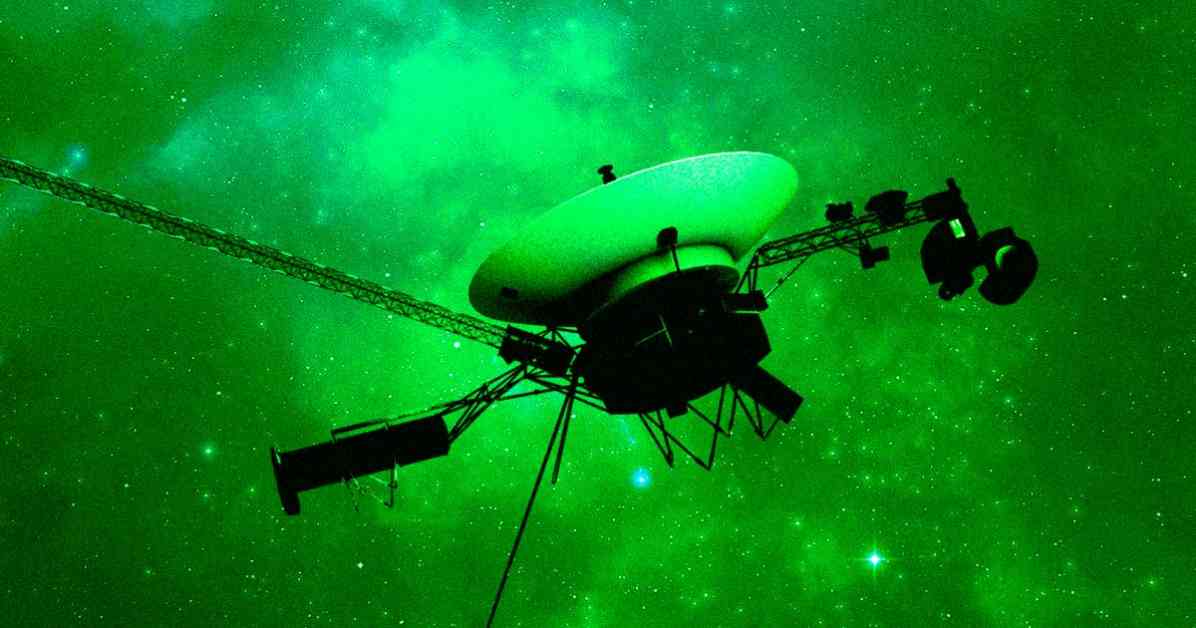NASA Achieves Remarkable Feat by Reactivating Voyager 1’s Ancient Thrusters
In a groundbreaking achievement, NASA engineers have successfully reactivated the ancient Voyager 1 probe, the farthest human-made object in space, by switching to a different set of thrusters. The remarkable feat, which required meticulous planning and expertise, was complicated by the vast distance of 15.3 billion miles that separates the probe from ground control. Despite the challenges, the team managed to overcome the obstacles and breathe new life into the historic spacecraft.
The Voyager 1 probe, which has been in operation for 46 years, encountered issues with some of its thrusters becoming clogged with silicon dioxide. This material buildup was attributed to a breakdown in a rubber diaphragm inside the fuel tank, reducing the thrusters’ efficiency. In response to this issue, NASA devised a solution to reactivate a different set of thrusters to ensure the probe’s continued functionality and longevity in space.
The successful reactivation of Voyager 1’s thrusters in late August marks a significant milestone in the spacecraft’s ongoing mission. Despite its age and the challenges it has faced, Voyager 1 continues to defy expectations and push the boundaries of exploration in outer space. The probe’s resilience and endurance serve as a testament to the ingenuity and dedication of the NASA team behind this remarkable spacecraft.
The Challenges of Space Exploration
Space exploration presents a myriad of challenges, from the extreme distances involved to the harsh conditions of the cosmic environment. Voyager 1’s recent thruster reactivation highlights the complexities of operating spacecraft in the vast expanse of outer space. The probe’s location at the edge of the solar system, coupled with its aging components, required innovative solutions and careful planning to ensure its continued operation.
The issue of material buildup in Voyager 1’s thrusters is just one example of the challenges faced by spacecraft operating in space. The harsh conditions of the cosmic environment can impact the performance of critical systems, requiring engineers to develop creative solutions to keep the spacecraft functioning effectively. NASA’s ability to address these challenges and overcome obstacles demonstrates the agency’s expertise and commitment to pushing the boundaries of exploration.
The Future of Voyager 1
As Voyager 1 continues its journey into interstellar space, the question remains: how long will the spacecraft hold on? Having already surpassed its original mission objectives to explore Jupiter, Saturn, and Titan, Voyager 1 has exceeded expectations and continues to provide valuable data and insights from the outer reaches of the solar system. While the spacecraft’s longevity is uncertain, NASA remains optimistic about its future prospects.
The recent reactivation of Voyager 1’s thrusters is a testament to the resilience and adaptability of the spacecraft and the dedicated team of engineers and scientists who support its mission. With careful planning and innovative solutions, Voyager 1 continues to defy the odds and pave the way for future exploration in the cosmos. As the spacecraft edges closer to the 50-year mark, the team behind Voyager 1 remains committed to ensuring its continued success and contribution to our understanding of the universe.
In conclusion, NASA’s reactivation of Voyager 1’s ancient thrusters represents a significant milestone in the ongoing mission of the farthest human-made object in space. The challenges faced by the spacecraft serve as a reminder of the complexities of space exploration and the ingenuity required to overcome obstacles in the cosmic environment. As Voyager 1 continues its journey into interstellar space, its legacy of exploration and discovery will endure for generations to come.













